Wiley widows, seals,screens ?
4 posts
• Page 1 of 1
Wiley widows, seals,screens ?
When you guys make Wiley windows , do you use some tape on foam weather stripping to stop water from seeping in (when closed) ? Also what about screens ?
Mostly Old Parts And Rust= MOPAR
- rustytoolss
- 500 Club
- Posts: 557
- Images: 1
- Joined: Tue Apr 19, 2016 3:50 am
Re: Wiley widows, seals,screens ?
The window design itself, if done right, keeps water out. With our trailer, we have 4. I leave them open (Florida) all the time, meaning that the plexi is left in the frame, but angled back so there is a 4" opening at the top to allow for air flow. Massive summer storms, the recent tropical storm, not a drop of water inside the camper. Towing last year through Virginia at 60 mph, in heavy rain, not a drop inside.
Make the base angled down and out. I sealed all interior portions of the window and wall with epoxy and then did angles down to the central drain line. The plexi is held back by the triangle shaped side holders. They force it closed or open. The screens are held to the inside of the window wall opening with hot glue, this allows me to remove them if necessary to clean or replace.
Here are the ones on the door before they were sealed
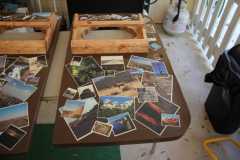
Here is a wall one, right after it was mounted, showing kind of how they work. The interior is just being worked on in these shots. All the plexi can be removed to be fully open. The door ones have a cross bar as we can mount an O-2 12 volt fan in the window(s) if we want. We also have ducted ventilation at the front. We sprayed all of the plexi with the window frost paint, so we can allow light in, but still have privacy.
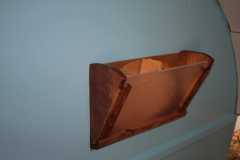
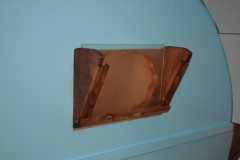
You can see the down angle on the bottom wood and the lower back piece of wood. These form the trough that keeps water out. All edges and corners are sealed with epoxy, then poly over.
The screens aren't mounted yet in any of these and the triangle lock piece aren't in place either. The triangles are just pieces of wood that match the angle of the window sides. you'll also notice that the plexi comes about 1" above the window opening, that is so when opened they are still above the opening top, so rain doesn't get in. I've had several sailboats in the past that had these type of windows. They work great.
Here is the finished product, with the temporary fan in the door.
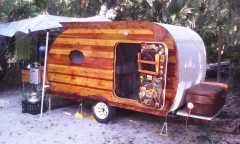
dave
Make the base angled down and out. I sealed all interior portions of the window and wall with epoxy and then did angles down to the central drain line. The plexi is held back by the triangle shaped side holders. They force it closed or open. The screens are held to the inside of the window wall opening with hot glue, this allows me to remove them if necessary to clean or replace.
Here are the ones on the door before they were sealed
Here is a wall one, right after it was mounted, showing kind of how they work. The interior is just being worked on in these shots. All the plexi can be removed to be fully open. The door ones have a cross bar as we can mount an O-2 12 volt fan in the window(s) if we want. We also have ducted ventilation at the front. We sprayed all of the plexi with the window frost paint, so we can allow light in, but still have privacy.
You can see the down angle on the bottom wood and the lower back piece of wood. These form the trough that keeps water out. All edges and corners are sealed with epoxy, then poly over.
The screens aren't mounted yet in any of these and the triangle lock piece aren't in place either. The triangles are just pieces of wood that match the angle of the window sides. you'll also notice that the plexi comes about 1" above the window opening, that is so when opened they are still above the opening top, so rain doesn't get in. I've had several sailboats in the past that had these type of windows. They work great.
Here is the finished product, with the temporary fan in the door.
dave
*******
Dave and Regina - Enjoying old age, a LOT!
Build Journal - http://www.tnttt.com/viewtopic.php?f=50&t=62386
Dave and Regina - Enjoying old age, a LOT!
Build Journal - http://www.tnttt.com/viewtopic.php?f=50&t=62386
-
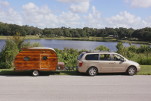
daveesl77 - Donating Member
- Posts: 871
- Images: 273
- Joined: Tue Jan 27, 2015 4:33 pm
- Location: Pocahontas County, West Virginia

